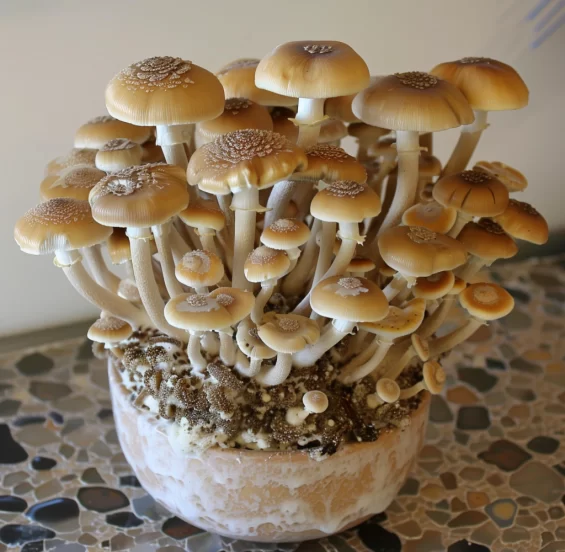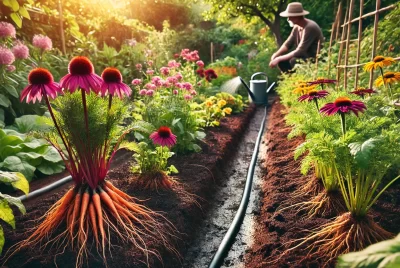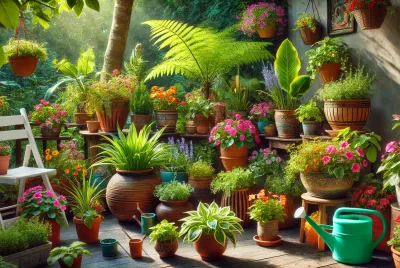Mushroom Gardening: Growing Nutritious Fungi
Introduction to Mushroom Gardening
Have you ever thought about mushroom gardening? If not, you’re in for a treat! Mushroom gardening is a fun and rewarding hobby that anyone can try. Whether you have a big backyard or just a small apartment, you can grow delicious and nutritious mushrooms right at home. In this article, we’ll explore everything you need to know to start your own mushroom garden. We’ll talk about the different types of mushrooms, the benefits of growing them, and some basic steps to get started.
Understanding Mushroom Gardening
Before diving into mushroom gardening, it’s important to understand a bit about mushrooms themselves. Mushrooms are not plants; they are fungi. They don’t need sunlight to grow, which makes them perfect for indoor gardening. Let’s take a closer look at the different types of mushrooms you can grow.
Types of Mushrooms
There are many types of mushrooms, but not all are suitable for home gardening. Here are three main categories you should know about:
Edible Varieties
Edible mushrooms are safe to eat and often quite delicious. Some popular edible mushrooms you can grow at home include:
- Button Mushrooms: These are the common white mushrooms you see in stores.
- Oyster Mushrooms: These have a mild flavor and grow in clusters.
- Shiitake Mushrooms: Known for their rich, meaty flavor, they’re great in soups and stir-fries.
Medicinal Varieties
Medicinal mushrooms are used for their health benefits. They may not always be the tastiest, but they are packed with nutrients and other beneficial compounds. Some examples include:
- Reishi Mushrooms: Often used in teas and supplements for their immune-boosting properties.
- Lion’s Mane Mushrooms: Known to support brain health and cognitive function.
Poisonous Varieties to Avoid
It’s crucial to know which mushrooms are poisonous to ensure your safety. Never consume wild mushrooms unless you are absolutely sure they are safe. Some dangerous varieties include:
- Death Cap: Extremely toxic and can be fatal if ingested.
- Amanita Mushrooms: Many species in this genus are poisonous.
Benefits of Mushroom Gardening
Growing mushrooms at home offers many benefits. Let’s explore why you might want to start mushroom gardening.
Nutritional Benefits
Mushrooms are packed with vitamins and minerals. They are a good source of B vitamins, vitamin D, and antioxidants. Adding home-grown mushrooms to your diet can boost your nutrition.
Environmental Benefits
Mushrooms can help the environment in several ways. They grow on organic waste like straw and sawdust, turning it into valuable compost. This process recycles waste and reduces the need for chemical fertilizers.
Economic Benefits
Buying mushrooms from the store can get expensive, especially if you like the gourmet varieties. Growing your own can save you money and ensure you have a fresh supply whenever you need it.
Basics of Mushroom Biology
Understanding a bit about how mushrooms grow can help you succeed in mushroom gardening. Mushrooms have a unique life cycle that is different from plants.
Fungal Life Cycle
Mushrooms start as tiny spores, which are like seeds. These spores grow into a network of fine threads called mycelium. The mycelium spreads through the growing medium, breaking down organic material. When conditions are right, the mycelium produces mushrooms, which are the fruiting bodies.
Mycelium and its Role
The mycelium is the main body of the fungus. It’s responsible for absorbing nutrients from the growing medium. Healthy mycelium is key to a successful mushroom garden.
By understanding these basics, you’re well on your way to becoming a successful mushroom gardener. In the next sections, we’ll guide you through getting started with your own mushroom garden, choosing the right types of mushrooms, and setting up your growing environment.
Getting Started with Mushroom Gardening
Now that you have a basic understanding of mushrooms and their benefits, it’s time to get started with mushroom gardening. This section will guide you through choosing the right mushrooms and setting up your growing environment.
Choosing the Right Mushroom
Selecting the right type of mushroom is crucial for success, especially if you are a beginner. Here are some factors to consider and popular choices for new gardeners.
Factors to Consider
- Growing Environment: Some mushrooms prefer cooler temperatures, while others thrive in warmth. Consider where you will be growing your mushrooms.
- Difficulty Level: Some mushrooms are easier to grow than others. Beginners should start with varieties that are known to be less finicky.
- Purpose: Decide whether you want to grow mushrooms for cooking, health benefits, or both.
Popular Choices for Beginners
- Button Mushrooms: These are easy to grow and widely used in cooking.
- Oyster Mushrooms: They grow quickly and can adapt to various growing conditions.
- Shiitake Mushrooms: Although they take longer to grow, they are highly valued for their flavor.
Setting Up Your Growing Environment
Creating the right environment is essential for mushroom gardening. Whether you choose to grow indoors or outdoors, you’ll need to control factors like temperature, humidity, and light.
Indoors vs. Outdoors
- Indoors: Growing mushrooms indoors allows for better control over the growing conditions. You can use a spare room, basement, or even a closet.
- Outdoors: Outdoor growing can be done in a shaded area of your garden. Logs, straw bales, or dedicated mushroom beds are commonly used for outdoor cultivation.
Controlled Environment (e.g., Grow Tents)
- Grow Tents: These provide a controlled environment with adjustable temperature and humidity. They are ideal for serious gardeners who want to optimize their mushroom yield.
- Humidifiers and Heaters: To maintain the right conditions, you might need a humidifier to keep the air moist and a heater to maintain a steady temperature.
Substrates for Mushroom Gardening
The substrate is the material on which mushrooms grow. Different mushrooms prefer different substrates. Choosing the right substrate is crucial for successful mushroom gardening.
Common Substrate Materials
- Straw: Widely used for growing oyster mushrooms. It’s cheap and readily available.
- Sawdust: Preferred by shiitake mushrooms. Make sure to use hardwood sawdust for the best results.
- Composted Manure: Often used for button mushrooms. It provides a rich nutrient base for the fungi.
- Coffee Grounds: A great way to recycle waste and grow mushrooms at the same time.
Preparing Your Substrate
Proper preparation of the substrate is essential to prevent contamination and ensure healthy mushroom growth.
- Pasteurization: This process involves heating the substrate to kill off any unwanted microorganisms. You can pasteurize straw by soaking it in hot water (160-180°F) for about an hour.
- Moisture Content: Ensure the substrate is moist but not waterlogged. A good rule of thumb is to squeeze the substrate – it should be damp, but not dripping wet.
Mushroom Gardening: The Inoculation Process
Inoculation is the process of introducing mushroom spores or spawn to the substrate. There are different methods to do this effectively.
Methods of Inoculation
- Spore Syringe: Spores are suspended in a liquid and injected into the substrate. This method is common for small-scale indoor gardening.
- Grain Spawn: This involves using grain that has been colonized by mycelium. It’s a reliable method for larger-scale operations and outdoor gardening.
- Plug Spawn: Wooden dowels inoculated with mycelium are hammered into logs. This method is great for growing mushrooms outdoors on logs.
Sterilization Techniques
To prevent contamination, sterilization is crucial. Here are some techniques:
- Pressure Cooker: Sterilizes small batches of substrate quickly and effectively.
- Autoclave: Used for larger operations, providing a more professional-grade sterilization.
- Chemical Sterilization: Involves using chemicals like hydrogen peroxide to sterilize the substrate. This method is less common but useful for certain types of substrates.
Caring for Your Mushrooms
Once your mushrooms are inoculated, proper care is essential to ensure they grow healthily and produce a good yield.
Monitoring Temperature and Humidity
- Temperature: Different mushrooms require different temperatures. Oyster mushrooms, for example, prefer temperatures between 55-65°F.
- Humidity: Mushrooms need a humid environment to grow. Aim for a humidity level of around 85-95%. You can use a humidifier or mist the growing area regularly.
Preventing Contamination
- Cleanliness: Always work in a clean environment. Wash your hands and sterilize your tools before handling the substrate.
- Airflow: Good airflow helps prevent mold growth. However, avoid direct drafts that can dry out the substrate.
Harvesting Mushrooms
Knowing when and how to harvest your mushrooms is key to getting the best quality and flavor.
Signs of Readiness
- Cap Shape: Mushrooms are ready to harvest when the caps have fully opened but before they start to flatten out.
- Color: The color of the mushroom can also indicate readiness. For example, oyster mushrooms should be a vibrant color when harvested.
Proper Harvesting Techniques
- Gentle Handling: Use a sharp knife to cut the mushrooms at the base, being careful not to damage the mycelium.
- Harvest Regularly: Check your mushrooms daily and harvest as they reach maturity. This encourages new growth and prevents overripe mushrooms from spoiling.
By following these guidelines and tips, you’ll be well on your way to a successful and rewarding mushroom gardening experience. Next, we’ll cover troubleshooting common problems, advanced techniques, and integrating mushrooms into your garden.
Troubleshooting Common Mushroom Gardening Problems
Even the best mushroom gardeners encounter problems. Knowing how to troubleshoot common issues can help you maintain a healthy mushroom garden.
Contaminants and Diseases
- Mold: One of the most common problems. If you see green, black, or blue mold, remove the contaminated substrate immediately.
- Bacterial Blotch: This appears as yellow, slimy patches on the mushrooms. Improve air circulation and reduce humidity to combat it.
Environmental Issues
- Too Dry: If your mushrooms are drying out, increase the humidity by misting more frequently or using a humidifier.
- Too Wet: Overly wet conditions can lead to mold. Ensure proper drainage and reduce misting.
Growth Problems
- Slow Growth: This can be due to low temperatures or inadequate nutrients in the substrate. Adjust the growing conditions accordingly.
- Abnormal Shapes: Irregular shapes often result from inconsistent humidity or light. Ensure stable growing conditions.
Advanced Mushroom Gardening Techniques
Once you have mastered the basics, you might want to explore more advanced techniques to enhance your mushroom gardening.
Cloning and Spore Collection
- Cloning: Take a small piece of mushroom tissue and place it on a nutrient-rich agar plate to grow mycelium.
- Spore Collection: Allow mature mushrooms to release spores onto a sterile surface. Collect these spores to create new cultures.
Creating Your Own Spawn
- Grain Spawn: Inoculate sterilized grains with mycelium from an agar plate or liquid culture. This method produces large quantities of spawn for bigger projects.
- Saw Dust Spawn: Similar to grain spawn but uses sawdust, ideal for growing on logs or outdoor substrates.
Integrating Mushrooms into Your Garden
Mushrooms can complement other gardening activities and create a more sustainable and productive garden ecosystem.
Companion Planting
- Vegetables: Mushrooms can be grown alongside vegetables like tomatoes and peppers, which benefit from the shade and moisture retained by mushroom beds.
- Herbs: Planting mushrooms with herbs like basil and parsley can enhance the flavors and health of both.
Permaculture and Mushrooms
- Soil Health: Mushrooms improve soil health by breaking down organic matter and enhancing nutrient cycling.
- Ecosystem Balance: Incorporating mushrooms into your garden can promote biodiversity and create a more resilient ecosystem.
Mushroom Gardening Conclusion
Mushroom gardening is a fascinating and rewarding hobby that offers numerous benefits. From understanding the types of mushrooms and their biology to setting up the perfect growing environment and troubleshooting common issues, this guide provides you with the knowledge you need to start your own mushroom garden.
We’ve covered everything from choosing the right mushrooms and preparing the substrate to advanced techniques like cloning and creating your own spawn. By integrating mushrooms into your garden, you can enhance the health of your plants and create a more sustainable gardening system.
Remember, the key to successful mushroom gardening is patience and attention to detail. With the right care and conditions, you can enjoy a bountiful harvest of delicious and nutritious mushrooms. So why wait? Start your mushroom gardening journey today and enjoy the many benefits it brings to your home and garden. Happy growing!
Frequently Asked Questions (FAQs) About Mushroom Gardening
1. What is the easiest type of mushroom to grow for beginners?
Answer: The easiest types of mushrooms for beginners to grow are Button Mushrooms, Oyster Mushrooms, and Shiitake Mushrooms. Button mushrooms are widely used and straightforward to cultivate, while oyster mushrooms grow quickly and adapt well to various conditions. Shiitake mushrooms take longer to grow but are highly valued for their flavor.
2. Can I grow mushrooms indoors, and if so, what do I need?
Answer: Yes, you can grow mushrooms indoors. You will need a suitable space such as a spare room, basement, or closet. Essential items include a growing container or bag, a substrate (like straw or sawdust), mushroom spawn, and tools for maintaining proper humidity and temperature. A grow tent, humidifier, and heater can help create the ideal environment for your mushrooms.
3. How do I prevent mold and contamination in my mushroom garden?
Answer: To prevent mold and contamination, always work in a clean environment and sterilize your tools and substrate before use. Maintain proper airflow to prevent mold growth, but avoid direct drafts. Regularly monitor humidity and temperature, and promptly remove any contaminated substrate to prevent the spread of mold.
4. How can I tell when my mushrooms are ready to harvest?
Answer: Mushrooms are ready to harvest when the caps have fully opened but before they start to flatten out. The color of the mushrooms can also indicate readiness; for instance, oyster mushrooms should be vibrant. Regularly check your mushrooms and use a sharp knife to cut them at the base when they reach maturity.
5. What are some common problems in mushroom gardening and how can I fix them?
Answer: Common problems in mushroom gardening include slow growth, mold, and abnormal shapes. Slow growth can be addressed by adjusting temperature and ensuring the substrate has adequate nutrients. Mold can be prevented by maintaining cleanliness and proper humidity levels. Abnormal shapes often result from inconsistent growing conditions, so ensure stable humidity and light to fix this issue.




